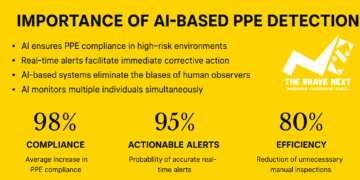In today’s high-demand, fast-paced industrial world, robotic arms are no longer just futuristic machines from sci-fi films—they are now the real driving force behind the evolution of precision manufacturing. From automotive production lines to microchip assembly, robotic arms are setting new standards for accuracy, consistency, and productivity. Businesses that adopt this advanced technology are experiencing fewer errors, reduced waste, and increased output, making robotic arms a smart investment for any modern manufacturing operation.
Precision You Can Count On
The heart of precision manufacturing lies in its demand for accuracy down to the smallest millimeter. Human error, fatigue, and inconsistent workmanship can compromise this level of detail. That’s where robotic arms come in. With programmed movements and laser-sharp accuracy, these machines can perform repetitive tasks tirelessly and flawlessly.
Whether it’s welding, painting, assembling, or picking and placing components, robotic arms execute each action with exactitude. Their built-in sensors and AI-powered controls allow them to adjust in real-time, meaning they can adapt to changes in material or unexpected shifts in production without slowing down.
Efficiency That Never Sleeps
Unlike human workers, robotic arms don’t need breaks, holidays, or sleep. They can operate 24/7 with minimal downtime, allowing manufacturers to increase production volume without sacrificing quality. This is particularly crucial in industries where time-sensitive delivery and large-scale output are non-negotiable, such as electronics and pharmaceuticals.
Many companies have seen their production speed double—sometimes triple—simply by integrating robotic arms into their processes. This efficiency not only helps meet deadlines but also frees up human employees to focus on more strategic, problem-solving tasks.
Reduced Waste, Higher Profits
One of the biggest hidden costs in manufacturing is material waste due to human error or imprecise work. Robotic arms drastically cut down on this waste by ensuring every movement, cut, or weld is done exactly as programmed. The result? Less scrap material, lower overhead costs, and a healthier bottom line.
For manufacturers working with expensive raw materials—like aerospace components or medical devices—this level of precision directly impacts profit margins. By reducing mistakes and rework, robotic arms help streamline operations and maintain quality control at every stage.
A Scalable Solution for All Sizes
While robotic arms were once considered only viable for large corporations with deep pockets, recent advancements in technology have made them more affordable and accessible. Today, even small to mid-sized factories can integrate robotic arms into their workflows. Modular designs and plug-and-play capabilities mean these tools can be customized to meet the specific needs of each production line.
From single-task machines to multi-functional units capable of switching between tasks, robotic arms offer flexible solutions that grow with your business. They can be easily reprogrammed for different products or processes, making them a future-proof investment in an ever-changing market.
The Future of Manufacturing is Here
There’s no question—robotic arms are the backbone of the next industrial revolution. Their role in precision manufacturing is only expanding as industries across the globe strive for more speed, accuracy, and profitability. Businesses that embrace this technology today are not only staying competitive—they’re defining the future.























